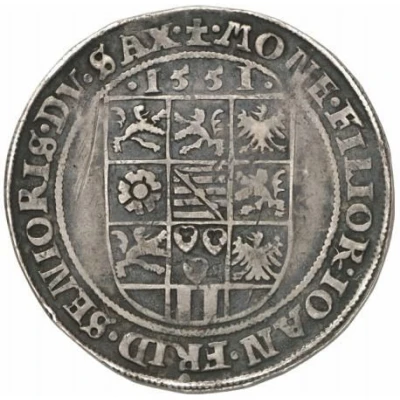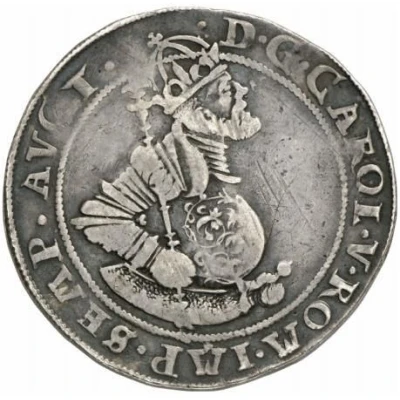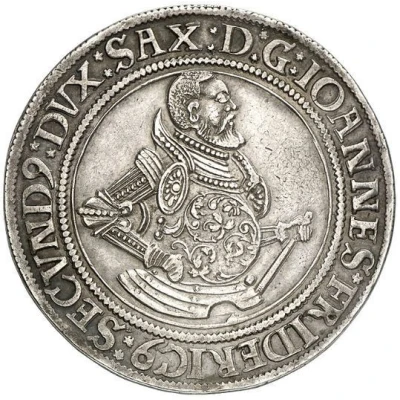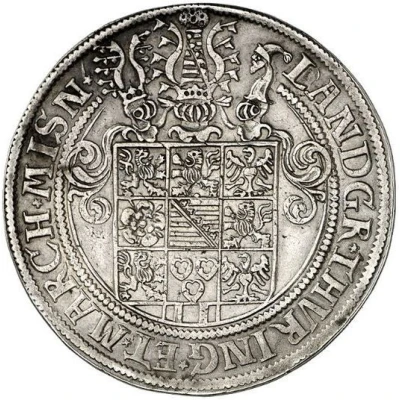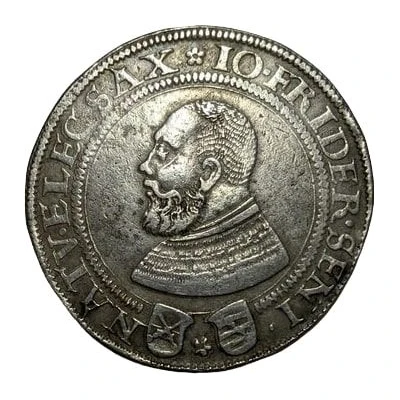
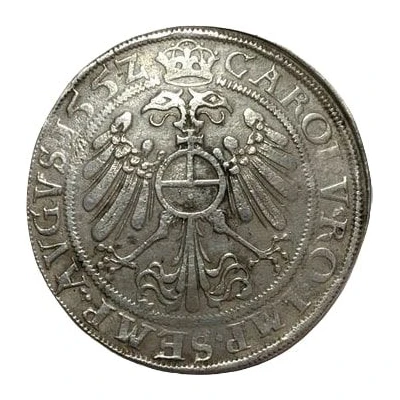

© rpillat
1 Thaler - John Frederick
| Silver | 28.54 g | 38 mm |
| Issuer | Electorate of Saxony (Ernestinian Line) (German States) |
|---|---|
| Duke | John Frederick I the Magnanimous (Johann Friedrich I) (1547-1554) |
| Emperor | Charles V (Karl V) (1519-1558) |
| Type | Standard circulation coin |
| Years | 1552-1553 |
| Value | 1 Thaler |
| Currency | Thaler (1485-1573) |
| Composition | Silver |
| Weight | 28.54 g |
| Diameter | 38 mm |
| Shape | Round |
| Orientation | Coin alignment ↑↓ |
| Demonetized | Yes |
| Updated | 2024-10-05 |
| Numista | N#352116 |
|---|---|
| Rarity index | 97% |
Reverse
Crowned imperial eagle, orb on breast, date at end of legend
Script: Latin
Lettering: CAROL(V)(S) : V : RO(M) : IMP : SEMP : AVG(VS)
Unabridged legend: Carolus Quintus (V) Romanorum Imperator Semper August
Translation: Charles V., roman emperor, ever august
Comment
Johann Friedrich, the Protestant elector of Saxony, was an important figure in the religious wars of the 16th century. Not only was he a personal friend of Martin Luther, but the elector also made sweeping reforms in his lands in support of the Protestant cause. In 1546, Joahnn Friedrich became embroiled in the Schmalkaldic War against Catholic Holy Roman Emperor Karl V. For the elector, the outcome was not good: he was defeated by Karl V at the Battle of Mühlberg in 1547 and imprisoned. When his cousin Maurice attacked Karl V in 1552, he was released and restored to power as a duke of Saxony. This coin was struck in the year of his release, just two years before his death.Interesting fact
One interesting fact about the Standard circulation coin 1 Thaler - John Frederick 1552-1553 from Electorate of Saxony (Ernestinian Line) (German States) made of Silver weighing 28.54 g is that it was minted during a time of great religious and political upheaval in Europe. The coin was issued during the reign of John Frederick I, who was a powerful prince and a leader of the Protestant movement in Germany. The coin's design reflects this tumultuous period, featuring an image of the prince on one side and the Saxon coat of arms on the other. Despite the challenges of the time, the coin remained a widely used and trusted form of currency throughout the German States.
